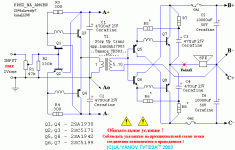Thats a good idea that I can support, but when it comes to the "analog gurus" I'm not sure who you actually are talking about, I think that you have to name them.
I just said analog gurus for lack of a better words 😉 Just some experienced analog designer(s) or similar. My own knowledge and experience in the field of electronics is very limited. I also don't know who is behind the forum accounts most of the time, the number of familiar faces and names keeps growing but half of the time I have no clue who I am talking to.
I just noticed there now exists a wikipedia article about diamond buffers. It was created in June of this year by someone who apparently put quite some work into it.
What I had in mind was something similar but much more detailed in some aspects, with the focus on topologies that can actually be implemented with readily available discrete semiconductors. Of course the individual parts would be kept rather short, no super deep dives, no explanations of really basic stuff. It should be assumed that the reader has basic knowledge and the ability to read up on some stuff. The interesting part would obviously be simulations and potential measurements. I thought that we could maybe agree on a set of exemplary use cases with adequate specifications, test signals/loads and boundary conditions, as well as a selection of commonly available transistors and models to be used for the comparative analysis. Quite a few interesting parts sadly have gone EOL recently or are in the process of going EOL...
Last edited:
Hi guys,
Do you have or know a high current diamond buffer type? I would like to build a 100W+ amplifier in this composition wich diamond buffer.
Thank you in advence
Do you have or know a high current diamond buffer type? I would like to build a 100W+ amplifier in this composition wich diamond buffer.
Thank you in advence
Thank you dreamth, but I am a little bit bad searcher. I don't find the right schematic because none of the above include the exact part types or high current parts. If you or anybody have a tried schema, please share with me.
#104 https://www.diyaudio.com/community/...ign-a-thread-split.366099/page-6#post-6521682Do you have or know a high current diamond buffer type?
From Russia with Love 🙂
Ageev 1982 http://interlavka.narod.ru/stats03/img/056.jpg
Last edited:
Diamond follower output
Attachments
-
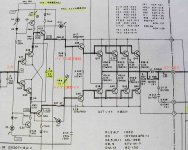 XF-0DB.jpg161.2 KB · Views: 552
XF-0DB.jpg161.2 KB · Views: 552 -
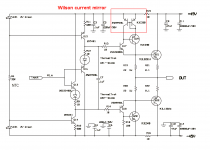 Wilson current mirror Buffer.png83.6 KB · Views: 508
Wilson current mirror Buffer.png83.6 KB · Views: 508 -
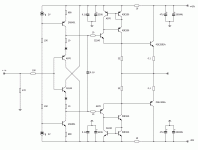 CAST AMP.gif99.2 KB · Views: 486
CAST AMP.gif99.2 KB · Views: 486 -
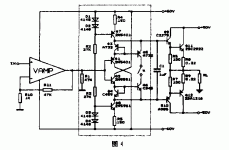 CJLGF.gif38.5 KB · Views: 479
CJLGF.gif38.5 KB · Views: 479 -
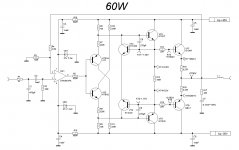 OPA551PA.jpg99.4 KB · Views: 537
OPA551PA.jpg99.4 KB · Views: 537 -
Diamond follower output stage 350.pdf29.2 KB · Views: 287
-
Diamond follower output stage PM-11S3 .pdf87.6 KB · Views: 347
Thank you Mark and OldDIY! Is there one of them the Walt Jung buffer?Diamond follower output
LM,Diamond follower output
This amp with Wilson mirror - do you have some more info about it? An article or something...
It looks very interesting..
Diamond Buffer with CFP
Attachments
-
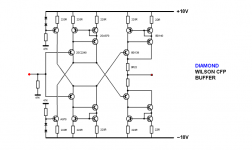 Diamond Buffer with CFP A.png11.9 KB · Views: 481
Diamond Buffer with CFP A.png11.9 KB · Views: 481 -
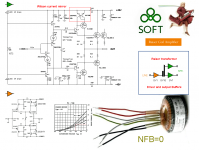 Diamond Buffer with CFP B.png119.9 KB · Views: 458
Diamond Buffer with CFP B.png119.9 KB · Views: 458 -
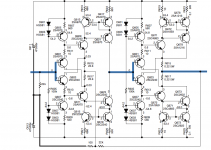 Diamond Buffer with CFP C.png37.3 KB · Views: 445
Diamond Buffer with CFP C.png37.3 KB · Views: 445 -
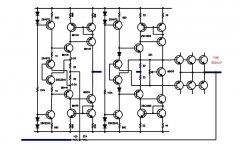 Diamond Buffer with CFP D.jpg58.1 KB · Views: 423
Diamond Buffer with CFP D.jpg58.1 KB · Views: 423 -
 Diamond Buffer with CFP F.PNG10.6 KB · Views: 398
Diamond Buffer with CFP F.PNG10.6 KB · Views: 398 -
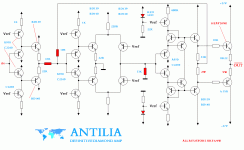 Diamond Buffer with CFP G.GIF23.5 KB · Views: 420
Diamond Buffer with CFP G.GIF23.5 KB · Views: 420 -
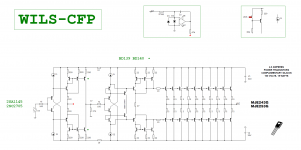 Diamond Buffer with CFP H.PNG22.3 KB · Views: 430
Diamond Buffer with CFP H.PNG22.3 KB · Views: 430 -
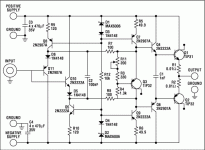 Open-loop buffer schematic.gif14.5 KB · Views: 410
Open-loop buffer schematic.gif14.5 KB · Views: 410 -
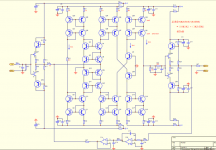 BPM A.png42 KB · Views: 430
BPM A.png42 KB · Views: 430 -
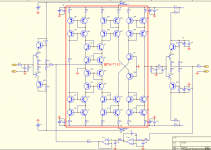 BPM B.png40.2 KB · Views: 420
BPM B.png40.2 KB · Views: 420 -
 CGW-DTJL.jpg122.2 KB · Views: 428
CGW-DTJL.jpg122.2 KB · Views: 428 -
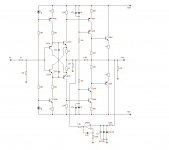 DLFK A.jpg64.3 KB · Views: 458
DLFK A.jpg64.3 KB · Views: 458
Audio research SD135 / Audio research D240
Attachments
-
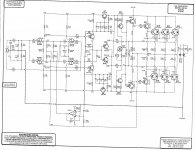 audio-research_sd135_amplifier_sch-1.jpg362.1 KB · Views: 385
audio-research_sd135_amplifier_sch-1.jpg362.1 KB · Views: 385 -
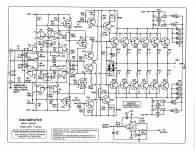 audio-research_d240_amplifier-2.jpg467.4 KB · Views: 406
audio-research_d240_amplifier-2.jpg467.4 KB · Views: 406 -
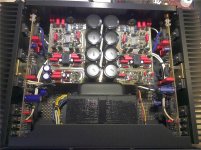 08-38-21-index.jpg534.7 KB · Views: 373
08-38-21-index.jpg534.7 KB · Views: 373 -
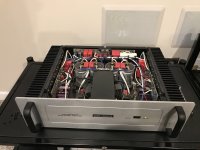 08-37-38-20170719_203743478_iOS.jpg170.9 KB · Views: 396
08-37-38-20170719_203743478_iOS.jpg170.9 KB · Views: 396 -
audio-research_d240_amplifier.pdf259.1 KB · Views: 308
-
audio-research_sd135_amplifier_sch.pdf189.9 KB · Views: 251
It's been a long time since i last saw Roman's favourite amp. Perhaps no longer favourite. Looked uncompromising to me at at the time, but not so sure about that today. With the fake bipolar output supply and the really basic supply for the tubez. What, not even a choke?
And a quote from Charly Hansen seems appropriate, seeing the weird biasing arrangement here:
"What is different about the diamond buffer from a typical output stage is that after the signal has been split into two halves to send to each output device, is that the two half signals are rejoined at ONE single point. There is NOTHING in between these two half signals. A conventional output stage always has something in between the two inputs of the two half-output stages before they are recombined. Typically it is a bias circuit of some sort that sets the idling current in the output devices. but there is always something there."
- Home
- Amplifiers
- Solid State
- Diamond Buffer variations
